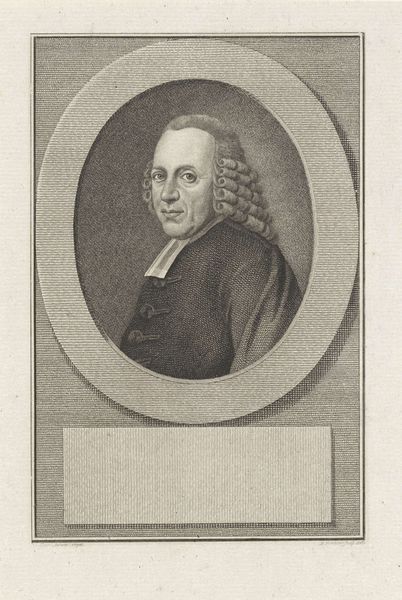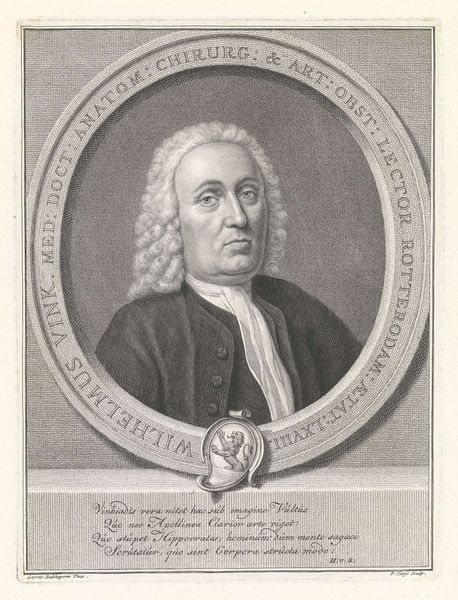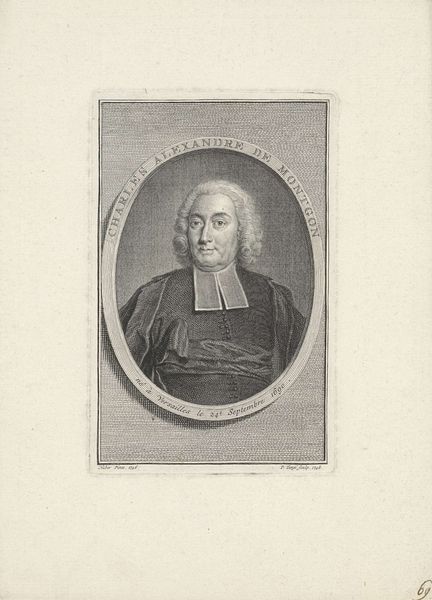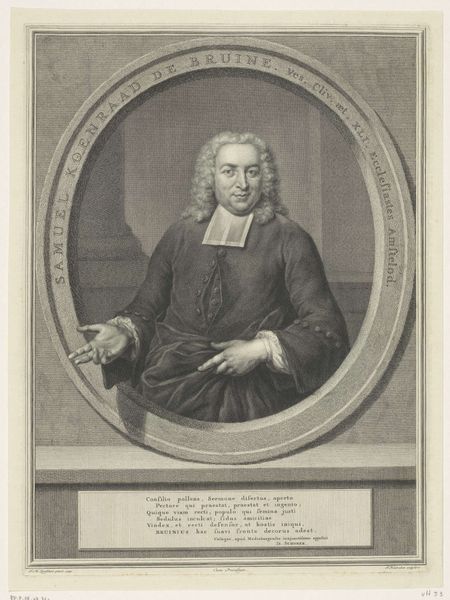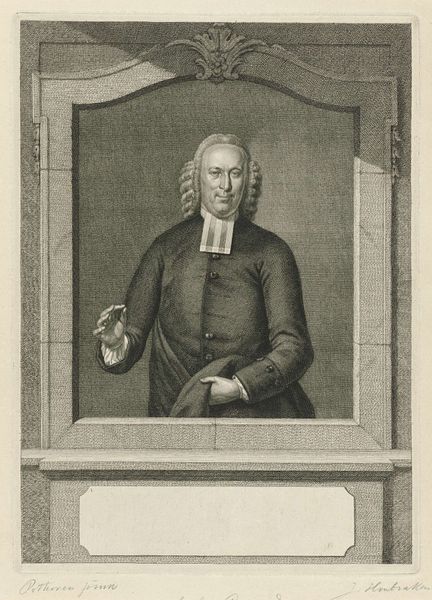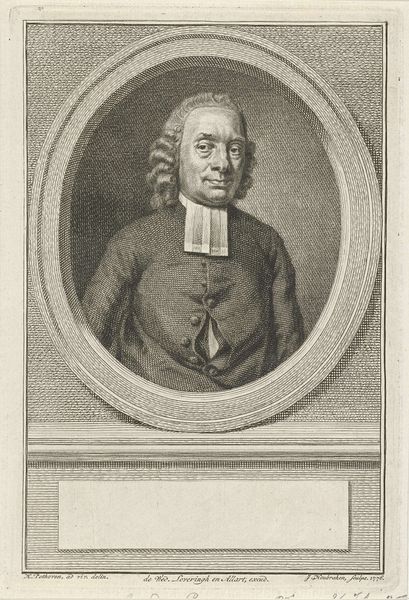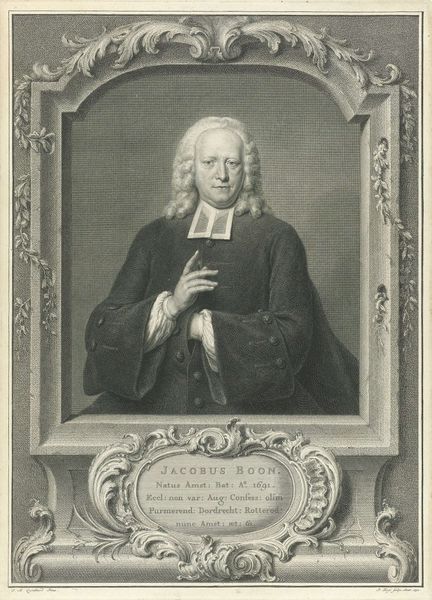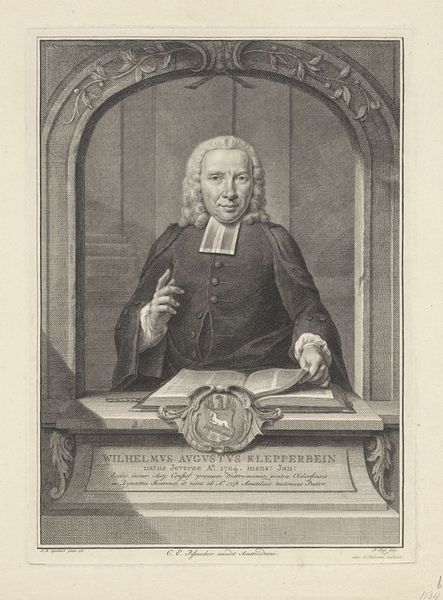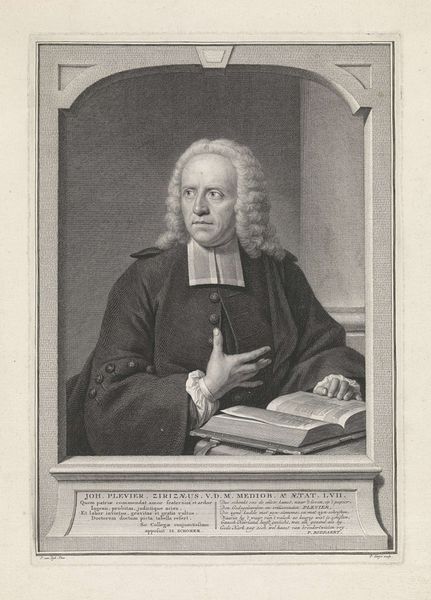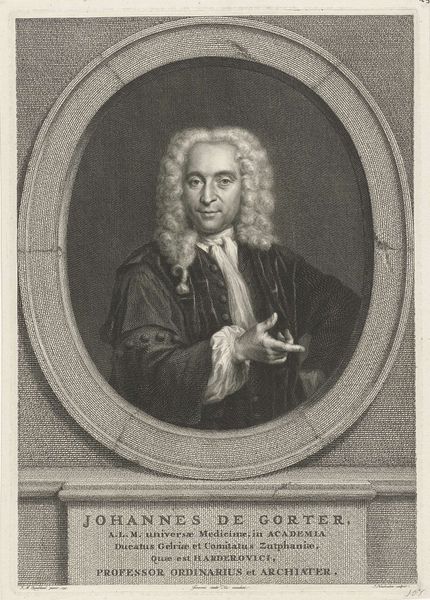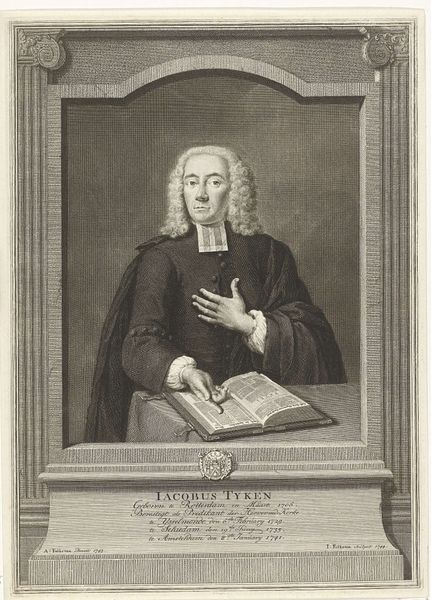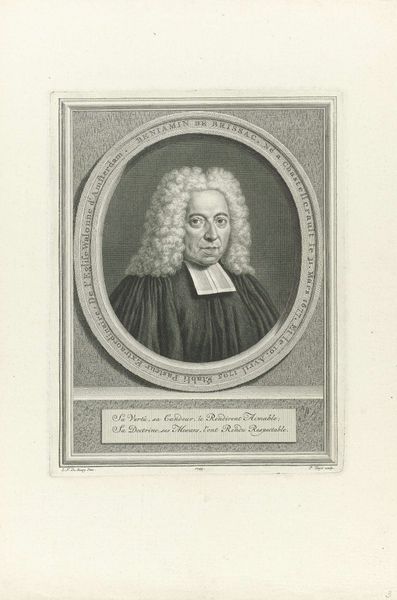
drawing, paper, engraving
#
portrait
#
drawing
#
16_19th-century
#
baroque
#
portrait image
#
paper
#
historical photography
#
19th century
#
portrait drawing
#
engraving
Dimensions: height 345 mm, width 256 mm
Copyright: Rijks Museum: Open Domain
Curator: Here we have "Portret van Joannes Munnekemolen," an engraving crafted by Jacob Houbraken in 1756, currently residing at the Rijksmuseum. Art Historian: It’s striking how contained he seems within that faux-stone frame. Almost like he’s speaking from a window in time, solemn and a touch imposing. Curator: Indeed. Notice how Houbraken employs the framing device to concentrate the viewer’s gaze. The linear precision in rendering the subject's garments and the adjacent book contrasts with the textured surfaces of the simulated stonework, creating a compelling tension. The meticulous detailing shapes the tonality, bringing a great presence through the print work itself. Art Historian: That "presence," as you call it, must be understood within the socio-political landscape of the Dutch Republic. Joannes Munnekemolen was a preacher and public figure of some standing; portraits such as this served to disseminate his image and solidify his authority amongst his followers. Engravings like these would have been relatively accessible, helping spread ideals broadly. Curator: Accessibility does not negate the conscious design. Look closely; observe the subject's hand, elegantly poised as though in mid-oratory. This combined with the gentle, but persuasive tilt of his head presents the man in a way that signals refined thought. Note the subtle dynamism it introduces. Art Historian: The book further symbolizes knowledge and learning – vital for a religious leader asserting his legitimacy and doctrinal purity in an era marked by debates amongst differing beliefs and societal changes. How effectively this image broadcasts those intentions speaks to Houbraken's own skill but also what someone of Munnekemolen’s profession felt he had to project. Curator: Precisely. Houbraken merges form and function to transcend mere representation. Art Historian: He had to operate within the bounds of the societal expectations. Considering that I now have a deeper appreciation for Houbraken’s print work as it portrays its era. Curator: I, on the other hand, will further examine how it stands within the continuum of portraiture as visual rhetoric, and pure visual experience.
Comments
No comments
Be the first to comment and join the conversation on the ultimate creative platform.

